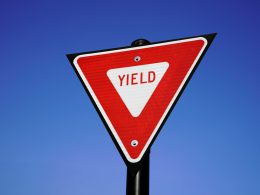by William Smead, Smead Capital Management
“Every tomorrow has been uncertain. America’s destiny, however, has always been clear: ever-increasing abundance.” —Warren Buffett, Berkshire Hathaway 2012 Shareholder Letter
Dear Fellow Investors:
This is the last installment in our five part series called “The Road to Omaha”. In this series of missives we have looked at the keys to the investing success of Warren Buffett leading up to the 2012 annual meeting.
WE BELIEVE THERE IS NO WEALTH CREATION WITHOUT VOLATILITY! Warren Buffett and his investors are the most successful investors in modern history. As a 33-year veteran of the investment business, it is comfortable for me to say that the urge to avoid stock market declines is the biggest problem the average investor has. US common stocks, as represented by the S&P 500 index, have produced returns of 9.3% compounded since 1930 as seen below:

Notice that two of these eight decades saw no return or a small loss. The original partners of Warren Buffett in 1956 have seen each $10,000 investment grow to over $400 million, if they have stayed with all of the Berkshire Hathaway shares they received in the 1969 distribution of partnership assets. Since the end of 1994 alone, Berkshire Hathaway “A” shares rose from $20,500 to $155,800 per share by April 26, 2013. Everyone who invests would love to get anywhere close to these returns. In fact, most investors would crave to get the historical 9.3% compounded return the index has produced. Mutual fund investors have underperformed the long-term results of the funds they owned and the indexes which they are compared. Here is what the long-term studies show that the average investor in US equity mutual funds earned in comparison to the average of the S&P 500 index:
Why did this happen? We think it happens because people come into the US stock market hoping that they will be able to make the historical return without participating in the historic declines which make up the 9.3% return. It seems to us that they pile into the stock market with massive new capital near market tops and they panic out late in bear market declines.
Every academic study that we have seen shows that there is a severe price paid in the form of lower returns to reduce the volatility of the ride. On top of reduced returns comes the added expense associated with market timing and the significantly worse taxation of overly-active investors. Buffett’s investors had to withstand four 50% or greater declines in Berkshire Hathaway shares to get to where they are today. Would you have had the backbone to be one of them?
Here is a chart of the most recent 50% decline in Berkshire Hathaway:

This means that someone with $300 million of BRK.A at the end of 2007 had $150 million of it in early March of 2009.
In an April 25th, 2013 article at Morningstar.com, writer Robert Goldsborough, summed up this entire discussion in his article entitled, “Timeless Investments Lessons from Warren Buffett’s Business Partner”. Here is how Charlie Munger describes how to gain the full benefit of participating for decades in owning businesses via US common stock ownership:
Munger’s invocation of multiple mental models has given him having a mindset characterized by four guiding principles that any ordinary investor should follow: preparation, patience, discipline, and objectivity. When practiced correctly, these attributes should result in buying great businesses at good prices and keeping one’s portfolio turnover low. As Munger himself once said, “You’re paying less to brokers, you’re listening to less nonsense, and if it works, the tax system gives you an extra 1, 2, or 3 percentage points per annum.
Can anyone else follow Munger’s mindset? “Poor Charlie’s Almanack” describes his worldview, perhaps tongue-in-cheek, as “Quickly Eliminate the Big Universe of What Not to Do, Follow Up with a Fluent, Multidisciplinary Attack on What Remains, Then Act Decisively When, and Only When, the Right Circumstances Appear.” But as Munger and Buffett have proven, it works. Munger once said, “It’s kind of fun to sit there and outthink people who are way smarter than you are because you’ve trained yourself to be more objective and more multidisciplinary. Furthermore, there is a lot of money in it, as I can testify from my own personal experience.”
We all want to gain the benefit of the long-term returns you can get from the very liquid asset class called US large cap stocks. On “the Road to Omaha”, we will assume that we will have to sit through numerous and sometimes extremely difficult stock market declines to earn substantial compounded returns on our liquid assets.
Best Wishes,
William Smead
The information contained in this missive represents SCM’s opinions, and should not be construed as personalized or individualized investment advice. Past performance is no guarantee of future results. It should not be assumed that investing in any securities mentioned above will or will not be profitable. A list of all recommendations made by Smead Capital Management within the past twelve month period is available upon request.
This Missive and others are available at smeadcap.com
Copyright © Smead Capital Management











